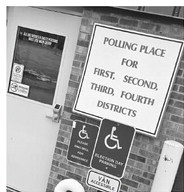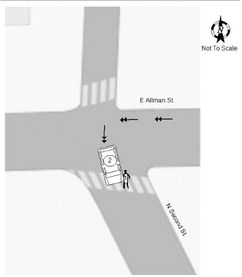Health insurance considerations to take into account as you grow older
For many seniors, medical insurance doesn’t get simpler or much cheaper when they turn 65.
“The biggest misconception when people turn 65, and they are going to enroll in Medicare, is they think, finally, I’m going to get some relief from insurance premiums and medical expenses. And you really don’t. Most people are shocked when they realize they will have this Part B premium. They still have these deductibles. They still have copays,” said Gail Sauerman, elder benefit specialist at the Taylor County Commission on Aging in Medford.
Medicare Part A covers hospital insurance (inpatient care, hospice care, home health care), and Part B covers medical insurance (outpatient care, services from doctors, screenings).
As with any form of insurance, individual circumstances dictate what kind of medical coverage is best for each person.
Whether someone is still working plays a role in the coverage they decide on at age 65. “If they are working and have employer health insurance, we recommend that they sign up for Medicare Part A,” Sauerman said. “If you have enough work history, you will not pay a premium for part A. The majority of people do not pay a premium. Its a good idea to enroll in Part A because it may help you in certain situations where your employer’s insurance might not be quite adequate.”
People who have insurance through their employer will likely reject Part B, at age 65, because Part B costs $174.70 each month, which they’d pay on top of healthcare costs through their employer. After someone stops working, they get a special enrollment period for Part B without any penalties. Once people are over age 65 and already collecting social security, they are automatically enrolled in Part A and Part B, and any premium is automatically deducted from their social security benefit.
Because Medicare only pays 80% of healthcare expenses, many people get additional coverage to help pay for the remaining 20%. There are two options. They can either choose to add coverage options to Original Medicare or choose a Medicare Advantage plan. In most cases, these additional coverages will have premiums.
With Original Medicare, people have Medicare Parts A and B, Part D for prescription drugs, and the option to add supplemental coverage, also known as Medigap.
“The advantages to having Original Medicare are that you can get care with any doctor or specialist that accepts Medicare, and often without the need for a referral. This works well for seniors that travel to Florida or Arizona during the winter,” Sauerman said.
Alternatively, people may purchase Medicare Advantage, also known as Part C. Medicare Advantage plans are a bundle of Parts A, B, and usually D. Advantage plans are from a private company. People enrolled in advantage plans do not need Medigap supplements. With Medicare Advantage plans, people can typically only go to doctors who are in their network, or they’ll pay higher out of pocket costs for out of network providers, similar to insurance from an employer. Sauerman advises seniors to make sure they understand which providers are in a Medicare Advantage Plan’s network before they sign up so they can continue to see current providers at their local facilities. A plus to a Medicare Advantage plan is some come with benefits that Original Medicare does not cover. For example, an Advantage plan may come with money to get new glasses each year.
In addition, the state offers a program for Wisconsin residents called SeniorCare. This is a program that helps seniors pay for prescription drugs and vaccines, with a premium of $30 per year. This is an alternative to Part D. “We always encourage people to enroll in SeniorCare at age 65, even if they don’t have a lot of prescription drug needs in the event that they do down the road,” Sauerman said. She noted if people do not enroll in Part D or SeniorCare when they first become Medicare eligible, they may pay penalties later.
There are also Medicare Savings Programs available that help limited income seniors with healthcare costs. “Based on income, these programs can help pay Part B premiums, deductibles, and copays. Basically, it’s a form of Medicaid,” Sauerman explained.
For seniors approaching age 65 with preexisting conditions, signing up for a solid plan is especially important. “During your Open Enrollment period, you can enroll in a Medigap policy regardless of your health status, at the best available rate with age and gender as factors,” Sauerman said. If a person decides to change plans from a Medicare Advantage plan to a Medigap policy a few years into Medicare, their application will go through medical underwriting, and they could be charged more or denied because of the condition.
People are able to change their coverage during the annual open enrollment period, which is October 15 until December 7 this year.
If the list of policies and choices is confusing, Sauerman is available to provide free help through the Commission on Aging. She said, “I do not sell health insurance. My job is to be a resource.”




